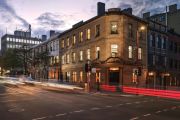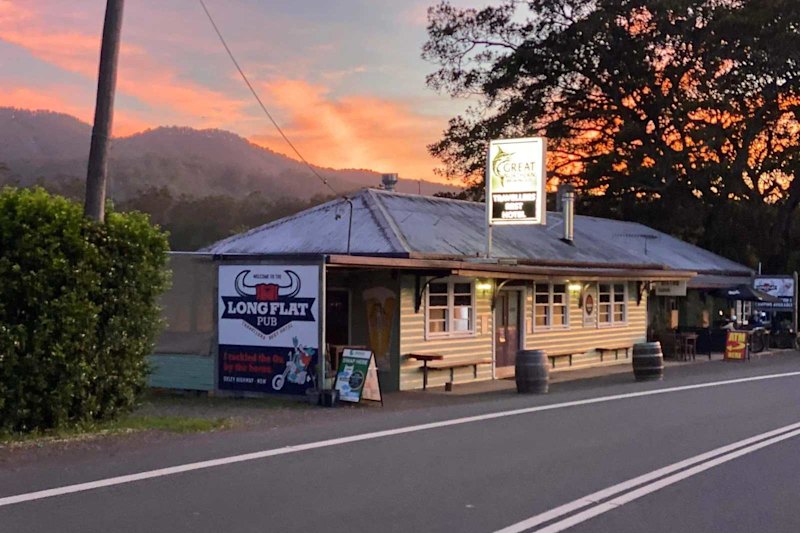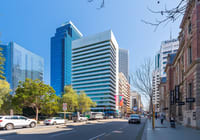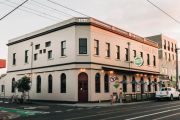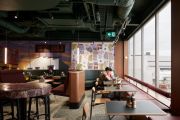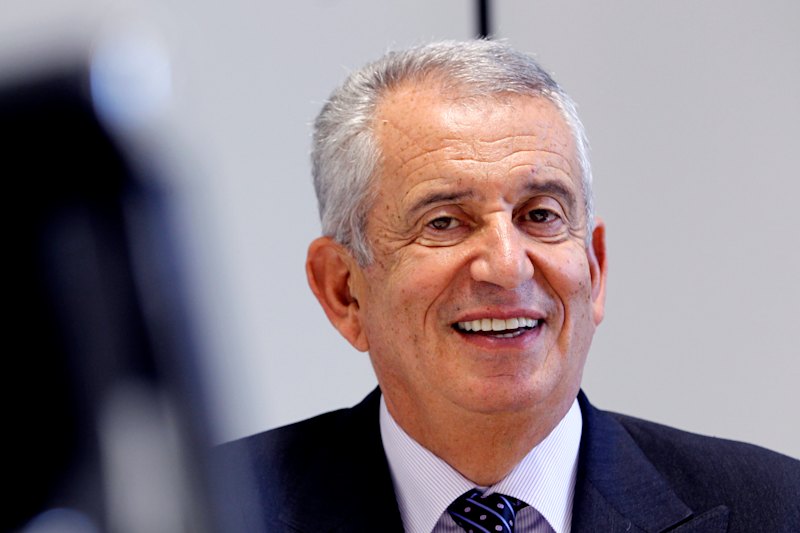
Why rental yield is important for investors in commercial property
With most banks offering interest rates at little more than 2 per cent and signs of volatility on the share market, many investors are looking to commercial property as a place to park their money and still earn a decent return.
But not every type of commercial property – or asset class – provides the same returns, or yield. If you’re an investor who prizes cash-flow above all else, the type of asset you buy, and where it is located, could be the difference between a high and low yielding investment.
What is yield?
“Gross yield” is the term used to describe the rate of return a property generates in the form of rental income as a proportion of its value (sale price).
“Net yield” is the same calculation but with outgoings and overheads, such as land tax, taken into account when calculating the income derived from a property. Net yield is sometimes referred to as the capitalisation rate, or cap rate.
It’s a quick way to get a rough indication of the rate of return a property will generate during the period of ownership but does not take into account any profit or losses caused by a fall or rise in the property’s capital value. It also doesn’t take into account any debt you owe on the property in the form of a loan.
How to calculate a property’s yield
“In the finance world, ‘yield’ is a percentage term describing the income generated from an investment,” said Domain research analyst Eliza Owen. “In commercial property, yield is generally found by dividing the annual rent income on a property, by the price paid for the property. For example, a warehouse purchased for $6 million with an annual income of $300,000 has a yield of 5 per cent (300,000 divided by 6 million equals 0.05, or 5 per cent).”
Yield by itself was not a reliable indication of an asset’s performance as the figure was highly vulnerable to market movements and changes in the wider economy, Ms Owen said.
“Whether yields are high or low are largely depend on tenant demand and the property price. Tenant demand is linked to economic factors like consumer spending, business investment and employment. For example, a shortage of office supply in a bustling CBD may push yields higher, as tenant demand bids up rent, increasing income relative to the purchase price.”
Ms Owen explained that low yields could be an indicator of either low or high demand, depending on the circumstances.
“Rising yields can also attract more investors. This can increase purchase prices, pushing yields back down. This particular phenomenon of ‘yield compression’, where yields have fallen due to higher purchase prices, has recently been observed in Sydney and Melbourne CBD office markets. This is because institutional investors seeking good, long-term investments, with access to vast pools of wealth, have become increasingly active in the market.
“A lack of demand for commercial space often sees landlords lowering their rents to attract tenants, which also brings yields down.”
How do yields differ across asset classes and locations?
Using data derived from recent transactions and insights from valuers, real estate firm CBRE has generated a range of yields for some of the most popular commercial real estate assets in Australia’s major population centres. These yield ranges are based on net yields, meaning outgoings have been accounted for.
From this we can see that competitive markets in the major eastern seaboard cities such as Sydney, Melbourne and Brisbane, attract some of the tightest yields, whereas smaller markets tend to attract higher rental returns as a proportion of their value.
Offices
Highest yields: Canberra secondary CBD
| Office yield – as of June 2019 | ||
| Prime CBD | Secondary CBD | |
| Sydney | 4.60% – 4.85% | 5.0% – 5.25% |
| Melbourne | 4.70% – 5.00% | 5.0% – 5.25% |
| Brisbane | 5.30% – 5.70% | 7.00% – 8.00% |
| Perth | 6.30% – 6.70% | 7.40% – 7.70% |
| Adelaide | 6.60% – 7.10% | 8.60% – 9.10% |
| Canberra | 6.15% – 6.55% | 9.00% – 9.75% |
| Source: CBRE |
Pubs
Highest yields: Regional Queensland
| Pub yield – as of June 2019 | ||
| Metro (capital city CBD and surrounds) | Regional | |
| NSW | 7.00% – 9.00% | 12.00% – 15.00% |
| Victoria | 4.00% – 6.00% | 8.00% – 10.00% |
| Queensland | 10.00% – 12.00% | 12.00% – 18.00% |
| WA | 7.00% – 12.00% | N/A |
| Source: CBRE |
Industrial
Highest yields: Adelaide strata warehouses
| Industrial warehouse yield – as of June 2019 | ||
| Super prime | Strata | |
| Sydney | 4.50% – 5.00% | 5.50% – 6.10% |
| Melbourne | 4.75% – 5.25% | 6.20% – 6.80% |
| Brisbane | 5.25% – 5.75% | 7.30% – 7.70% |
| Perth | 5.50% – 6.00% | N/A |
| Adelaide | 6.30% – 6.80% | 8.40% – 9.10% |
| Canberra | 6.75% – 7.25% | 7.20% – 8.20% |
| Source: CBRE |
Retail
Highest yields: Perth CBD
| Shopping centre yield – as of June 2019 | |||
| Prime CBD | Regional shopping centre | Sub-regional and neighbourhood shopping centre | |
| Sydney | 4.50% – 5.00% | 4.35% – 4.85% | 5.40% – 5.90% |
| Melbourne | 3.20% – 4.00% | 4.40% – 4.75% | 5.40% – 6.20% |
| Brisbane | 5.25% – 6.00% | 4.25% – 5.75% | 5.50% – 7.00% |
| Perth | 6.00% – 7.50% | 4.75% – 5.25% | 5.75% – 7.00% |
| Adelaide | 4.70% – 5.20% | 5.25% – 5.85% | 6.50% – 7.20% |
| Canberra | 6.25% – 6.75% | 5.15% – 5.65% | 5.65% – 7.00% |
| Source: CBRE |
How do yields for commercial property stack up to residential property?
Commercial real estate typically has higher yields than residential real estate, although as the table below shows, some residential properties in some cities have higher yields than commercial properties.
The latest Domain Group data to June 2019 shows that the highest yield an investor could expect in the residential market would be 6.2 per cent for an apartment in Darwin – a market which has suffered significant capital-value declines in recent years.
| Median house rental yield | Median unit rental yield | |
| Sydney | 3.4% | 4.0% |
| Melbourne | 3.4% | 4.6% |
| Brisbane | 4.7% | 5.4% |
| Perth | 4.5% | 5.1% |
| Adelaide | 4.5% | 5.3% |
| Hobart | 5.1% | 5.1% |
| Canberra | 4.3% | 6.1% |
| Darwin | 5.0% | 6.2% |
| Source: Domain Group |
How important is yield for property investors?
In general, yield carries greater weight in commercial investment than residential, Ms Owen said.
“Yield is particularly important in commercial real estate because high rates of capital growth are uncommon. This means that yield is an indicator of the main way you will make money on a commercial property, whereas capital gains are more anticipated in residential,” she said.
“Capital gains are relatively low in commercial property because it is an illiquid asset type, with longer lease terms and longer holding periods. Higher deposits and fees are generally incurred for commercial property lending compared to residential, so commercial property values tend to be less inflated through lending conditions.”
Yield is just one element to consider when investing in property. Investors also need to consider things such as capital gains, vacancy rates, future development upside and lease conditions when weighing up the financial sense of a particular purchase.
How much importance you place on a property’s yield will also depend on your financial situation and investment priorities – including your ability to service any loan repayments. As with all investment decisions, it pays to know your own requirements and seek professional advice.
The importance an investor should place on yield rates is also highly dependent on the market they are searching in, according to Gemma Isgro, an associate director capital markets at CBRE.
The yield on a property for sale wasn’t always a good guarantee of what that property might generate in the future.
Ms Isgro said that there could be a lag between movements in rental growth and capital values in fast-moving markets such as Sydney – something exacerbated by the long lease agreements inherent with commercial properties.
“In some areas, like the city fringe, commercial rents have increased drastically over the past 18 months, yields have not aligned yet with traditional capital value,” said Ms Isgro, who handles a variety of commercial sales in the city’s fringe and eastern suburbs.
Indicative yields also fail to take into account short-term changes that a new owner could make to the property, including renegotiating rents when the lease comes up for renewal.
“We are selling buildings on sub-3 per cent net yields as informed buyers are aware of where they can [increase] rents once leases come up for review, immediately turning a 3 per cent returning property into a 5 per cent with the right leasing approach,” she said.
In some asset classes, indicative yield – a predicted return on the asset based on current profit projections – may vary significantly depending on the profit generated in a given year.
“Ninety per cent of hotels run under a management agreement, so your return fluctuates in line with your performance in the market,” explained Andrew Langsford, Senior Vice President, Investment Sales at JLL Hotels & Hospitality Group.
This has led to most buyers in the hotel sector relying on other measures, like “price per key” as a preferred method of assessing the property’s value.
“Price per key (the cost of acquisition divided by the number of keys) is the accepted industry standard,” Mr Langsford said, adding that investors should focus on market fundamentals as well.
“We’d encourage investors to look at the macroeconomic fundamentals such as tourism figures and infrastructure projects,” he said.
Ms Isgro said that most buyers in Sydney’s fringe market were more concerned with a building’s capital value than any yield figures.
“Any smart buyer we have dealt with looks for capital value, not yield. The key is to be across the market and know how you can add value and increase the return,” she said.
That’s a sentiment shared by Ms Owen.
“When making a purchase of commercial property, the current earnings, or yield, is only an indicator of potential earnings, and not what the investor may actually end up making. Tenants leaving, being unable to pay rent, or unexpected maintenance costs could disrupt the flow of income and reduce the yield. So, commercial property investors should consider local business and economic conditions, lease terms, the quality of the building and the versatility of the space among other factors,” she said.
